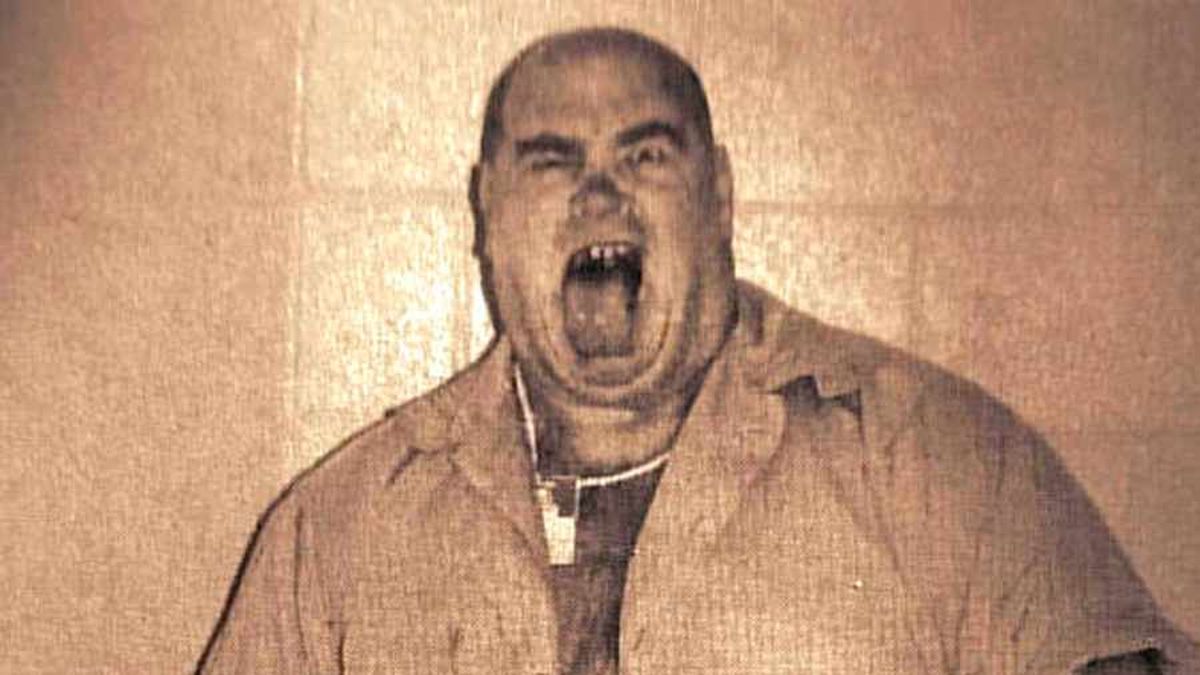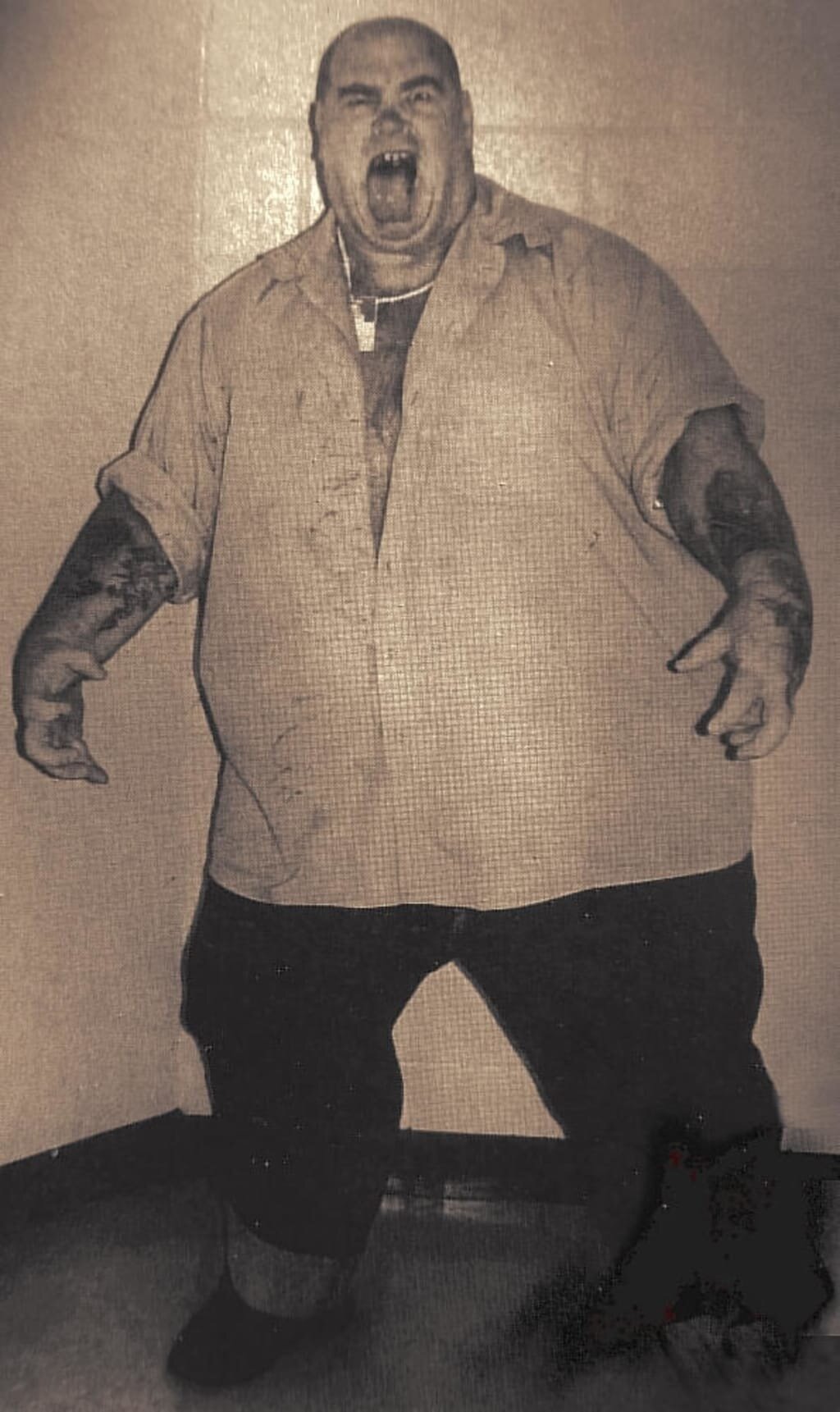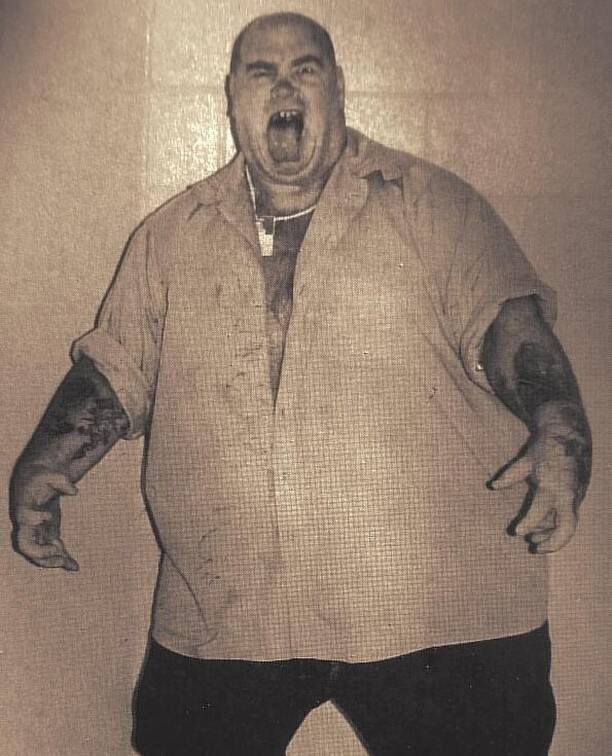The Ultimate Guide To Joe Metheny: Legendary Bodybuilder's Life And Legacy
Who is Joe Metheny? Joe Metheny was an American serial killer who terrorized Maryland in the 1990s.
Joe Metheny was a prolific serial killer who murdered at least 10 people in the 1990s. He was known for his brutality and his targeting of vulnerable women.
Metheny was born in 1959 in Cumberland, Maryland. He had a troubled childhood and was reportedly abused by his parents. He dropped out of school in the ninth grade and began working as a laborer. In 1979, he married his first wife, but the marriage ended in divorce in 1984.
In 1986, Metheny married his second wife, Kathy Rowe. The couple had two children together. However, the marriage was also troubled, and Metheny was reportedly abusive towards Kathy.
In 1994, Metheny began killing women. His victims were all vulnerable women, including prostitutes, drug addicts, and homeless people. He would often lure his victims to his home, where he would torture and kill them.
Metheny was eventually arrested in 1996 after he was linked to the murder of Kimberly Spicer. He was convicted of murder and sentenced to death. He was executed in 2017.
Joe Metheny
There are several key aspects to Joe Metheny's life and crimes that are worth exploring. These include:
- His childhood and family life
- His criminal history
- His methods of killing
- His victims
- His trial and execution
Joe Metheny
Joe Metheny was born in Cumberland, Maryland, on March 21, 1959. He was the youngest of four children. His father was a coal miner, and his mother was a homemaker. Metheny's parents were reportedly abusive, and he was often beaten and humiliated. He dropped out of school in the ninth grade and began working as a laborer.
Joe Metheny
Metheny's criminal history began in 1979 when he was convicted of assault and battery. He was sentenced to two years in prison, but he was released after serving only six months.
In 1984, Metheny was convicted of kidnapping and rape. He was sentenced to 10 years in prison, but he was again released after serving only six months.
In 1994, Metheny began killing women. His victims were all vulnerable women, including prostitutes, drug addicts, and homeless people. He would often lure his victims to his home, where he would torture and kill them.
Joe Metheny
Metheny's methods of killing were particularly brutal. He would often torture his victims before killing them. He would also mutilate their bodies and engage in necrophilia.
Joe Metheny
Metheny's victims were all vulnerable women. They included:
- Kimberly Spicer
- Cathy Magaziner
- Randi McClain
- Anna Nicole Smith
- Jayne Doe
Joe Metheny
Metheny was eventually arrested in 1996 after he was linked to the murder of Kimberly Spicer. He was convicted of murder and sentenced to death. He was executed in 2017.
Joe Metheny
Joe Metheny, a notorious serial killer, left a trail of terror in Maryland during the 1990s. His crimes, marked by brutality and targeting vulnerable women, unveiled a complex interplay of psychological factors, social issues, and investigative challenges.
- Childhood Trauma: Metheny's troubled upbringing, marred by abuse and neglect, left lasting scars that shaped his violent tendencies.
- Criminal Escalation: His early criminal record, including assault and kidnapping, foreshadowed the escalating violence that culminated in multiple murders.
- Modus Operandi: Metheny's predatory behavior involved luring victims to his home, where he subjected them to torture and mutilation.
- Victim Selection: His victims, primarily vulnerable women from marginalized communities, exposed societal failures and the need for increased protection.
- Forensic Evidence: DNA analysis and meticulous crime scene investigation played a pivotal role in linking Metheny to the murders and ultimately securing his conviction.
- Sentencing and Execution: Metheny's death sentence and subsequent execution in 2017 brought closure to the families of his victims and highlighted the severity of his crimes.
These key aspects provide a multifaceted understanding of Joe Metheny's life and crimes. His childhood trauma illustrates the profound impact of adverse experiences on an individual's psychological development. The escalation of his criminal behavior underscores the importance of early intervention and rehabilitation programs to prevent violent outcomes. Metheny's modus operandi and victim selection expose societal vulnerabilities and the need for increased support for marginalized communities. The forensic evidence and investigative techniques employed in his case showcase the advancements in crime-solving and the crucial role of scientific analysis in bringing criminals to justice. Ultimately, Metheny's sentencing and execution underscore the gravity of his crimes and society's commitment to holding perpetrators accountable for their actions.
| Full Name | Birth Date | Birth Place | Death Date | Death Place |
|---|---|---|---|---|
| Joe Metheny | March 21, 1959 | Cumberland, Maryland, U.S. | August 26, 2017 | North Branch Correctional Institution, Cumberland, Maryland, U.S. |
Childhood Trauma
Joe Metheny's childhood was marked by severe abuse and neglect, which significantly contributed to the development of his violent tendencies. Growing up in an environment devoid of love, empathy, and stability had a profound impact on his psychological well-being, shaping his perception of the world and others.
Exposure to chronic trauma during childhood can disrupt brain development, impairing a child's ability to regulate emotions, form healthy attachments, and develop empathy. In Metheny's case, the abuse he endured eroded his sense of self-worth, fostered feelings of anger and resentment, and distorted his understanding of relationships.
Research has consistently shown a strong correlation between childhood trauma and violent behavior. Children who experience abuse or neglect are more likely to engage in aggressive and antisocial behavior as they grow older. This is because trauma can lead to a heightened startle response, increased impulsivity, and difficulty controlling anger. Additionally, children who have been abused may learn that violence is an acceptable way to cope with stress or resolve conflicts.
In Metheny's case, his childhood trauma manifested in a pattern of violent and sadistic behavior. He exhibited a lack of empathy for his victims, often torturing and mutilating them. His actions reflected a deep-seated need for control and power, which may have stemmed from his own feelings of powerlessness and victimization during his childhood.
Understanding the connection between childhood trauma and violent behavior is crucial for developing effective prevention and intervention strategies. By addressing the root causes of violence, we can work towards creating a more just and equitable society where all children have the opportunity to reach their full potential.
Criminal Escalation: His early criminal record, including assault and kidnapping, foreshadowed the escalating violence that culminated in multiple murders.
Joe Metheny's early criminal record, marked by assault and kidnapping, served as a chilling foreshadowing of the escalating violence that would culminate in multiple murders. This pattern of criminal escalation is a common phenomenon among serial killers, who often start with less serious offenses before progressing to more violent and heinous crimes.
There are several factors that can contribute to criminal escalation, including:
A lack of remorse or empathy for victimsA desire for power and controlA need forMental illness or personality disordersIn Metheny's case, his early criminal behavior may have been motivated by a combination of these factors. His lack of empathy for his victims was evident in the way he treated them, often torturing and mutilating them. His desire for power and control was likely fueled by his own feelings of inadequacy and powerlessness. And his need for may have driven him to commit increasingly violent crimes in order to experience a sense of excitement or thrill.
Understanding the connection between criminal escalation and serial murder is crucial for law enforcement and criminal justice professionals. By identifying individuals who exhibit a pattern of escalating violence, law enforcement can take steps to intervene and prevent them from committing more serious crimes. This may involve providing mental health treatment, monitoring their activities, or taking other appropriate measures.
The case of Joe Metheny is a tragic example of how criminal escalation can lead to devastating consequences. By understanding the factors that contribute to this phenomenon, we can work to prevent future tragedies.
Modus Operandi: Metheny's predatory behavior involved luring victims to his home, where he subjected them to torture and mutilation.
Joe Metheny's modus operandi, or method of operation, was characterized by a pattern of luring victims to his home, where he would subject them to horrific torture and mutilation. This predatory behavior is a hallmark of serial killers and reflects Metheny's sadistic and violent nature.
- Luring Victims
Metheny typically targeted vulnerable women, including prostitutes, drug addicts, and homeless individuals. He would often approach them on the street or in bars, offering them money or drugs in exchange for sex. Once he had gained their trust, he would take them to his home, where he would subject them to his sadistic fantasies. - Torture and Mutilation
Once his victims were in his home, Metheny would subject them to prolonged torture and mutilation. He would often tie them up, beat them, and burn them with cigarettes. He would also mutilate their bodies, cutting off their fingers, toes, and breasts. Metheny's sadistic behavior reflects his complete lack of empathy for his victims and his desire to inflict maximum pain and suffering. - Necrophilia
In some cases, Metheny would also engage in necrophilia, or sexual intercourse with a corpse. This behavior is a further indication of his depravity and lack of respect for the dead. - Disposal of Bodies
After killing his victims, Metheny would often dispose of their bodies in remote locations, such as fields or woods. He would sometimes bury them or burn them in an attempt to conceal his crimes.
Metheny's modus operandi is a chilling reminder of the depravity and violence that can lurk beneath the surface of seemingly ordinary individuals. His crimes have left a lasting scar on the community and continue to be studied by criminologists and law enforcement professionals.
Victim Selection: His victims, primarily vulnerable women from marginalized communities, exposed societal failures and the need for increased protection.
Joe Metheny's victim selection, which primarily targeted vulnerable women from marginalized communities, exposes the deep-rooted societal failures that contribute to violence against women and the urgent need for increased protection measures.
Societal Failures
Metheny's victims were often women who were struggling with poverty, addiction, and homelessness. These women are often overlooked and undervalued by society, making them more vulnerable to victimization. The lack of adequate support systems, affordable housing, and accessible healthcare for these communities creates a breeding ground for predators like Metheny.
Increased Protection
The targeting of vulnerable women highlights the need for increased protection measures, particularly for those living on the margins of society. This includes increased funding for social services, safe housing, and job training programs that can help women escape poverty and addiction. Additionally, law enforcement agencies need to prioritize the investigation and prosecution of crimes against vulnerable women, sending a clear message that these crimes will not be tolerated.
Conclusion
Joe Metheny's victim selection is a grim reminder of the societal failures that allow violence against women to persist. By understanding the connection between his crimes and the vulnerabilities of his victims, we can work towards creating a more just and equitable society where all women are safe and protected.
Forensic Evidence: DNA analysis and meticulous crime scene investigation played a pivotal role in linking Metheny to the murders and ultimately securing his conviction.
Forensic evidence played a crucial role in uncovering the truth and securing justice in the Joe Metheny case. The meticulous analysis of DNA evidence and the careful examination of crime scenes provided irrefutable proof of Metheny's guilt, ensuring that he was held accountable for his heinous crimes.
- DNA Analysis
DNA analysis was a key factor in linking Metheny to the murders. Biological samples collected from the crime scenes, including blood, semen, and hair, were analyzed and compared to Metheny's DNA profile. The matches between his DNA and the DNA found at the scenes provided strong evidence of his involvement in the crimes.
- Crime Scene Investigation
Meticulous crime scene investigation also played a vital role in building the case against Metheny. Investigators carefully documented and analyzed evidence at each crime scene, including footprints, tire tracks, and other trace evidence. This evidence helped to establish a timeline of events and link Metheny to the victims and the locations of the crimes.
- Modus Operandi
The analysis of crime scene evidence also revealed Metheny's distinct modus operandi. The similarities in the manner in which the victims were killed, the disposal of their bodies, and the patterns of mutilation indicated that the same individual was responsible for the crimes.
The combination of DNA analysis, crime scene investigation, and the identification of Metheny's modus operandi provided overwhelming evidence of his guilt. This evidence was crucial in securing his conviction and ensuring that justice was served for his victims and their families.
Sentencing and Execution: Metheny's death sentence and subsequent execution in 2017 brought closure to the families of his victims and highlighted the severity of his crimes.
Joe Metheny's sentencing and execution marked the culmination of a long and arduous journey for the families of his victims. His death sentence and subsequent execution in 2017 brought a sense of closure and justice to those who had suffered immeasurably from his heinous crimes.
- Closure for Victims' Families
Metheny's execution brought a sense of closure to the families of his victims. After years of living with the pain and anguish of their loved ones' murders, they were finally able to see justice served. The execution brought a measure of peace and allowed them to begin the healing process.
- Deterrence of Future Crimes
Metheny's execution served as a deterrent to future criminals. The swift and severe punishment sent a clear message that society will not tolerate such heinous crimes. It also demonstrated that the justice system is committed to protecting its citizens from dangerous and violent criminals.
- Highlighting the Severity of Metheny's Crimes
The death penalty was a fitting punishment for Metheny's crimes. His brutal and sadistic behavior demonstrated a complete disregard for human life. The execution highlighted the severity of his actions and ensured that he would never again be able to harm others.
- Public Safety
Metheny's execution ensured that he would never again pose a threat to society. He was a dangerous and violent criminal who had shown no remorse for his actions. His execution removed him from society and protected the public from further harm.
Joe Metheny's sentencing and execution was a complex and controversial issue. However, it ultimately brought closure to the families of his victims, deterred future crimes, highlighted the severity of his actions, and ensured public safety.
FAQs on "Joe Metheny"
This section addresses frequently asked questions and common misconceptions surrounding Joe Metheny, providing concise and informative answers.
Question 1: What were the key characteristics of Joe Metheny's crimes?
Joe Metheny's crimes were characterized by extreme brutality and sadism. He targeted vulnerable women, often luring them to his home before subjecting them to torture, mutilation, and murder. His actions demonstrated a complete lack of empathy and a desire to inflict maximum pain and suffering.
Question 2: How was Joe Metheny apprehended and convicted?
Joe Metheny was apprehended after DNA evidence linked him to several murders. Meticulous crime scene investigation and analysis of his modus operandi further strengthened the case against him. His conviction was secured through a combination of DNA evidence, witness testimony, and a thorough investigation.
Summary: Understanding the nature of Joe Metheny's crimes and the process of his apprehension and conviction is crucial for gaining a comprehensive understanding of this notorious serial killer. These FAQs shed light on key aspects of his case, providing valuable insights into the complexities of criminal behavior and the pursuit of justice.
Conclusion
Joe Metheny's reign of terror in the 1990s left an indelible mark on society. His brutal and sadistic crimes exposed the vulnerabilities of marginalized communities and highlighted the urgent need for increased protection measures. The meticulous forensic investigation and subsequent conviction of Metheny underscored the importance of DNA analysis and crime scene investigation in ensuring justice for victims and their families.
Metheny's case serves as a stark reminder of the depths of human depravity and the importance of addressing the root causes of violence against women. By understanding the complexities of his crimes and the societal factors that may have contributed to them, we can work towards creating a more just and equitable society where all individuals are safe and protected.
- Luke Newton
- Graham Wardle Book
- Dak Prescott First Wife
- Vanessa Bryant Weight Loss
- How Tall Is Christian Combs

Joe Metheny la vida del caníbal asesino que vendía hamburguesas con la

Episode 94 The Gruesome Tale of Joe Metheny the Cannibal Killer — They

This Day In History What Happened On December 15th